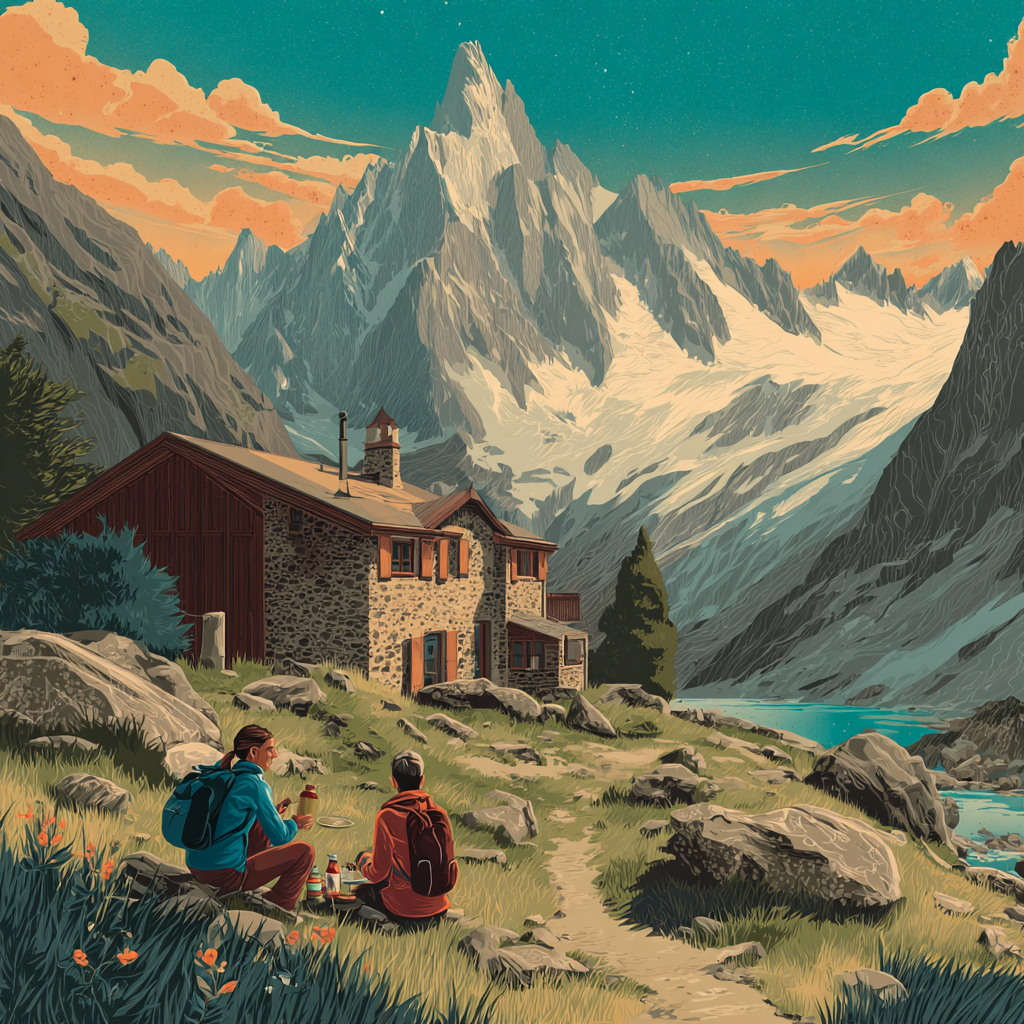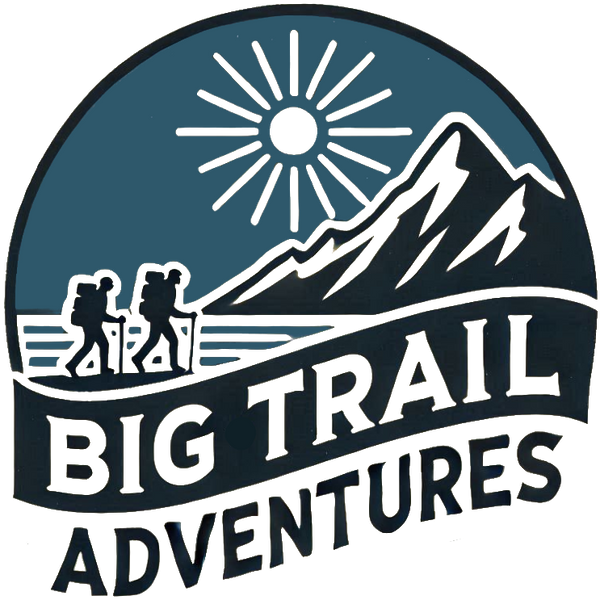
The Path to Tour Du Mont Blanc Joy
Share
Today we’re talking all things Tour du Mont Blanc (TMB) — the classic 170 km loop around the Mont Blanc massif, and one of the most beloved trails on earth. I’m joined by Ian and Emily from tmbtrailguide.com, who’ve been helping hikers for over eight years with their camping guides and one-to-one planning conversations. They first hiked the TMB in 2017, have been back many times since, and (to underline the trail’s global pull) they live in Boulder, CO.
We get into the sounds and smells of the route, what hut-to-hut life really feels like, smart ways to use transit and variants, and a few packing tips I wasn’t expecting.
So… what is the TMB?
“It’s a 170 km, three-country loop — France, Italy, Switzerland — circling Mont Blanc, the highest peak in Western Europe. You move valley to valley, over high cols, through tiny villages and big scenery. It’s popular for good reason: you get culture and landscape in one continuous walk.”
What makes it special (even after trails in the US, NZ, and beyond)?
“The mix. You’ll nibble local cheese from a farmhouse, hear cowbells in green pastures, then crest a snow-rimmed pass. Add the camaraderie: you’re sharing tables, stories, and plans with hikers from all over the world.”
A favourite kind of day
-
Early start: out at 6:15–6:30, coffee + croissant, cool air, quiet trail.
-
The rhythm: begin in a valley, climb to a col, long descent to the next village.
-
Mid-morning pause: espresso or tart at a refuge/rifugio.
-
Evening: a refuge in the mountains or a village inn — bookended by good food and those pink-glow sunsets on rock and ice.
The soundtrack & scent track
-
Cowbells (of course).
-
Torrents and streams threading up to the cols.
-
Boots crunching on grit.
-
Pastoral noises — sheep, small farms, cheesemakers.
-
And for smell? The unmistakable hit of a French patisserie in the morning. “You can’t really recreate that anywhere else.”
Refuges = community
Don’t go for solitude — go for connection. Dinner is family-style: multiple courses, shared tables, route-chat, and collective scheming.
“One July we had a surprise snow day — no wifi, patchy phones — and everyone was around the table comparing options, maps, and courage. Cosy chaos.”
How Ian & Emily help hikers
-
Camping on the TMB — the guide: updated yearly since 2017; everything spot-on for tenters (rules, campgrounds, detours, logistics).
-
One-to-one planning chats: pressure-free video calls to refine itineraries, transit choices, alternatives, and the little things that make a big difference.
Why planning matters on the TMB
Beds first, then everything else.
Refuge bookings are a patchwork (a semi-central site plus individual huts). Lock in your accommodation and have a Plan B for each night.
Transit is your friend.
-
Buses, lifts (telecabins, gondolas, chairlifts) run in summer.
-
Use them to shorten a day, combine stages, or detour to campgrounds down in the valley — especially useful in Italy, where wild-camping rules are tighter.
Camping on the TMB (what they wish they’d known)
-
It’s lovely — and tricker than it looks. Not every night can be near the trail.
-
Expect short detours to official sites; know the rules, especially in Italy and Switzerland.
-
Transit helps you keep a light, legal, flexible plan — without missing the good bits.
Common mistake
“Being too rigid. Guidebook stages are a helpful scaffold, not a religion. If a village is full, detour. You’ll discover places you’d never have planned — and still rejoin the route easily.”
What to pack (a few you might not expect)
-
Sun hoody (or long-sleeve + wide-brim). It’s high, bright, and exposed — a hoody is ‘sunscreen you can’t sweat off’.
-
Nail clippers — seriously. Long downhills + long nails = black toenails.
-
Quality socks + a tiny blister kit (Compeed or similar).
-
Poles — save knees on the big climbs/descents.
And a friendly PSA: every year someone is hobbling in flip-flops because their boots ate their feet. Don’t be that legend.
Europe vs US hiking (from Boulder to the Alps)
-
Refuges! Cold beer and cheese at 2,000 m is a very European joy.
-
Less wilderness, more access: public transit everywhere; lifts in season.
-
Wildlife: ibex, chamois, marmots — magic. (Still store food sensibly if camping; foxes love a rummage.)
-
Fewer bear protocols; more pastry protocols.
Quickfire
Best wildlife spot
-
Around Lacs des Chéserys (via Lac Blanc alternate): chamois, ibex, marmots — especially magical after day-hikers leave.
Best hot treat
-
Refuge de Miage (via the Col de Tricot variant): the blueberry pie is a pilgrimage.
-
Maison Vieille (Italy): sunshine, tables, great food, big vibes.
Toughest climbs
-
Standard route: the Col du Bonhomme + Col de la Croix du Bonhomme combo (long, many false summits, huge views).
-
Hardest variant (if weather is perfect): Fenêtre d’Arpette — steep boulder fields, glacier-close drama; earn it, love it.
Teleport us now to…
-
Col de Balme: sweeping first view back into the Chamonix valley and the aiguilles guarding Mont Blanc.
-
Rifugio Bonatti evening: day crowds gone, alpenglow on rock — pure magic.
The story they’ll still tell in 10 years
-
Their first TMB with too-heavy packs, a long push into Courmayeur, and the sweetest relief at Maison de Sauvage (and a masterclass in carrying less next time).
-
Summer with their one-year-old: a month based in Chamonix, tag-teaming solo stages, learning the trail all over again with a tiny teammate.
If you go because of this chat…
Notice how quickly you step out of Chamonix bustle into quiet pastures, and how much of this landscape still feels timeless — cows, cheese, glaciers, and paths connecting villages the way they always have.
